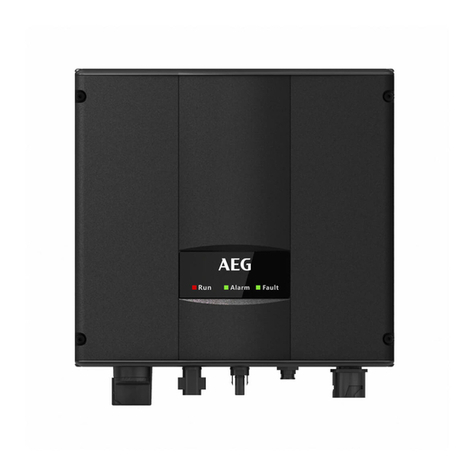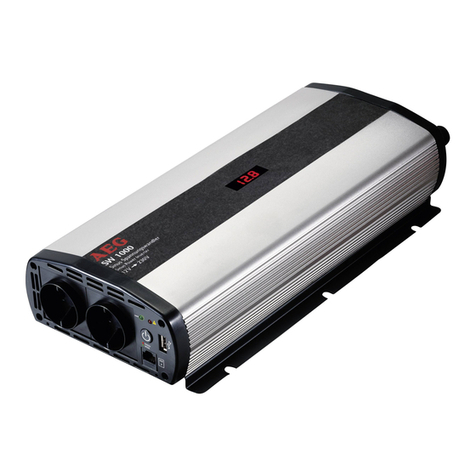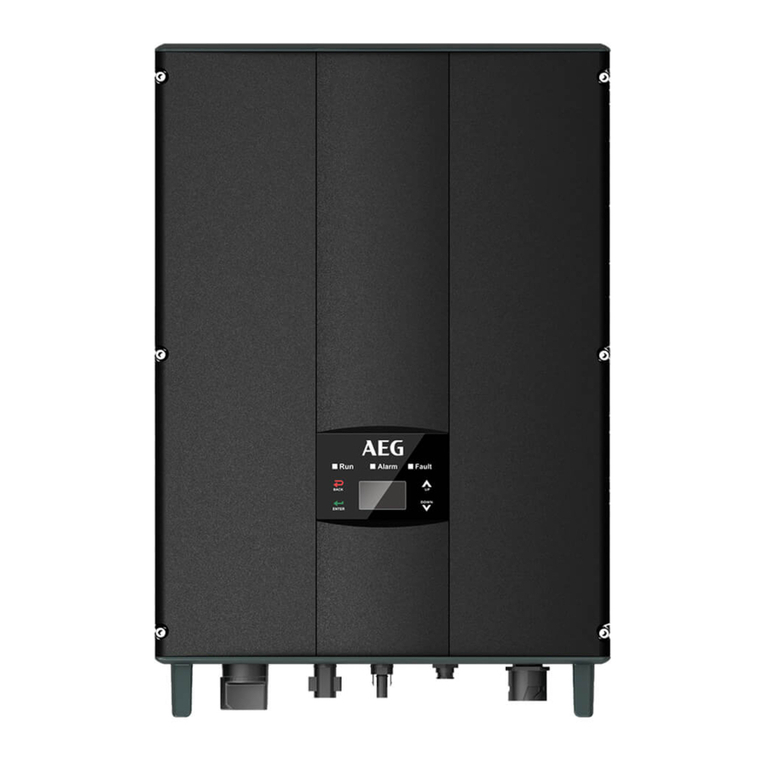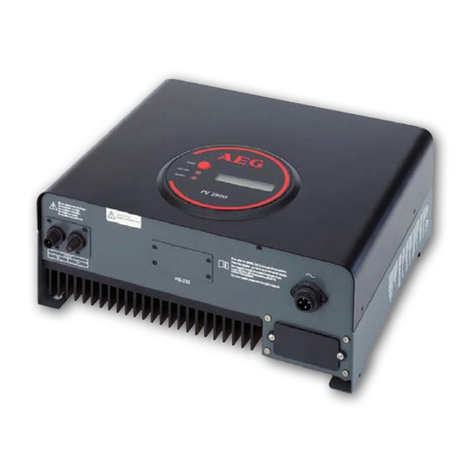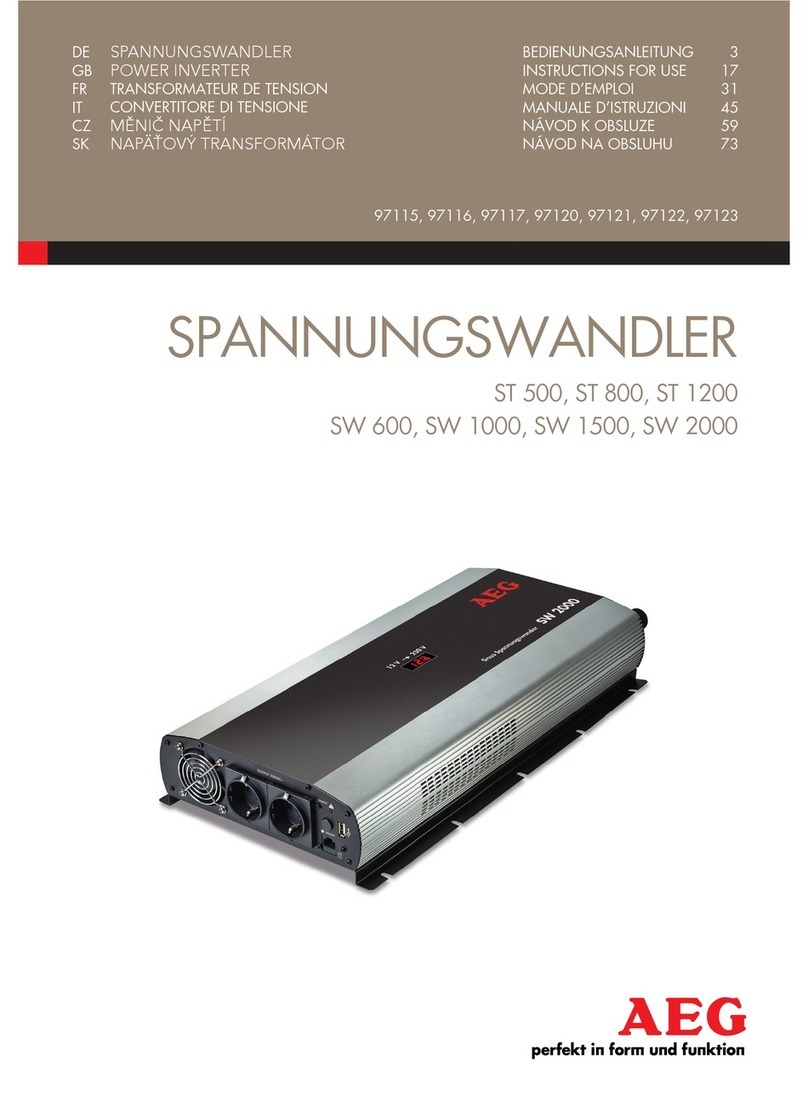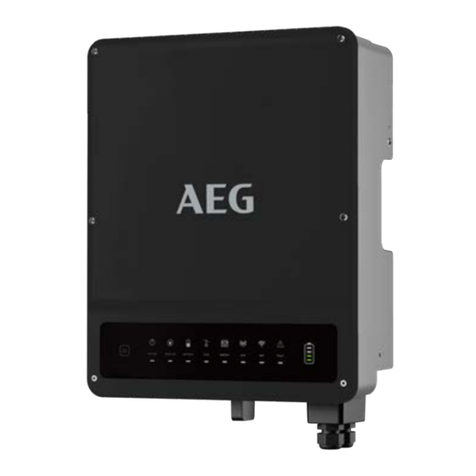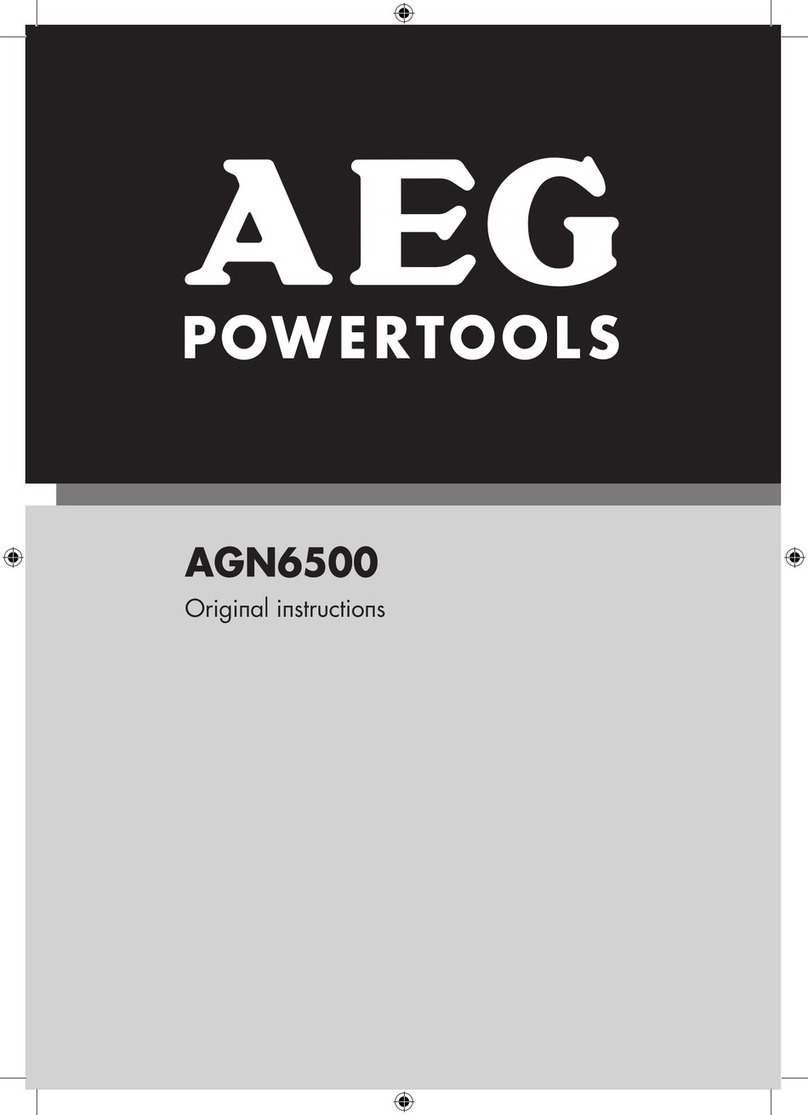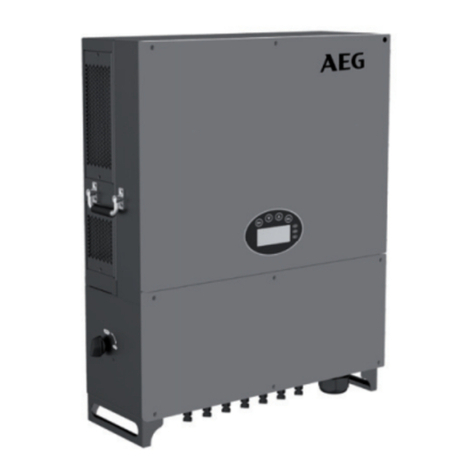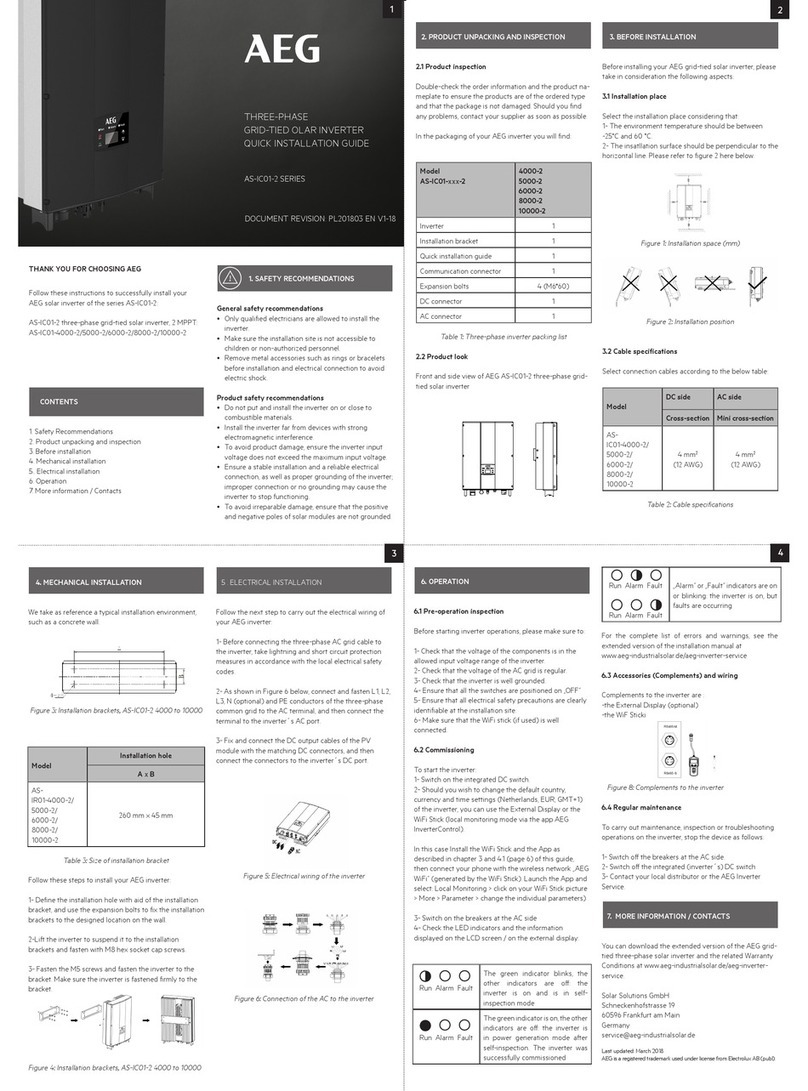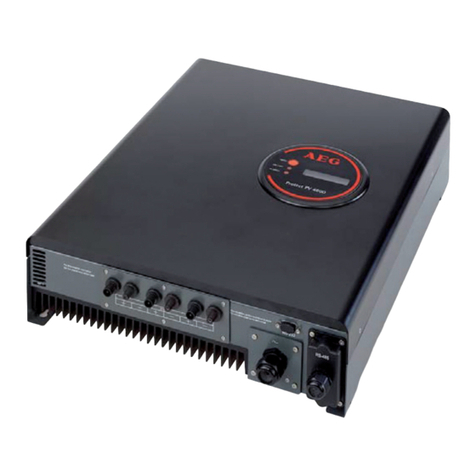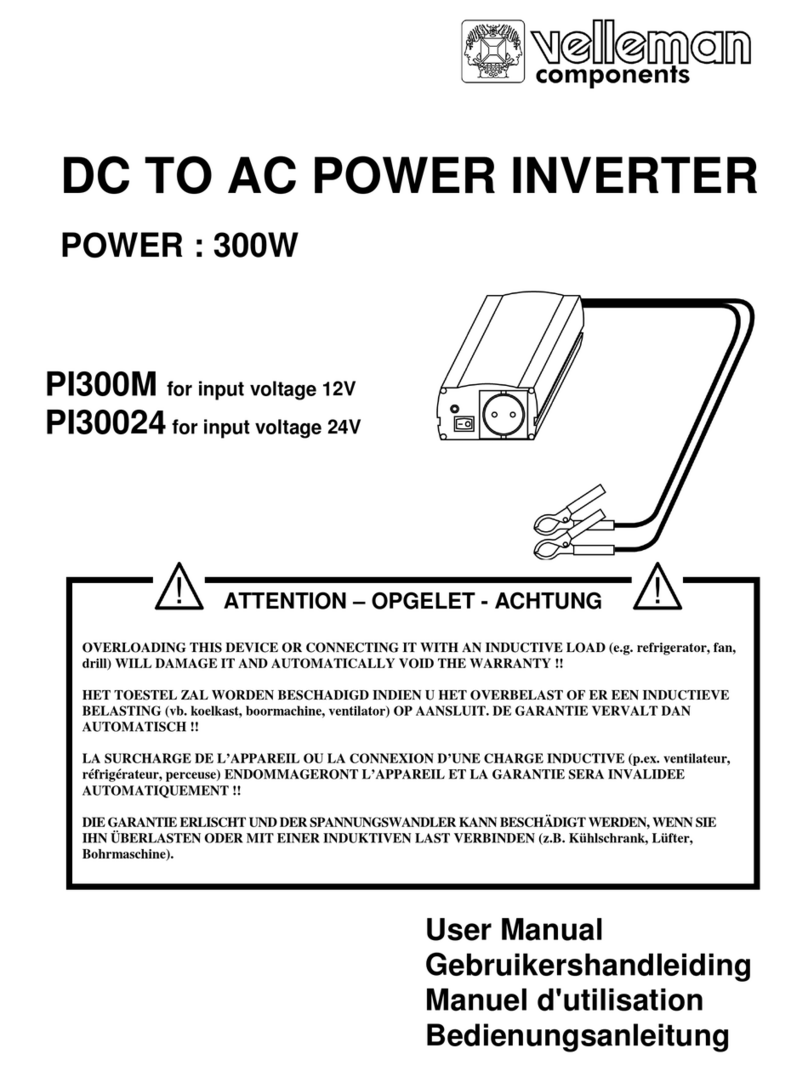3
PD201809 AEG GRID-TIED THREE-PHASE SOLAR INVERTER (4-10 kW) V.2-18 EN
3
3.4.1 Connection of solar modules....................................................................................................................................................................................23
3.4.2 AC connection of three-phase inverters 4 kW to 10 kW..............................................................................................................24
4. Operation..........................................................................................................................................................................................................................................................25
4.1 Inspection before operation.................................................................................................................................................................................................25
4.2 Grid-tied operation.......................................................................................................................................................................................................................26
4.3 Stop..............................................................................................................................................................................................................................................................27
4.4 Maintenance..............................................................................................................................................................................................................................27
4.4.1 Regular maintenance.................................................................................................................................................................................................27
4.4.2 Maintenance guide...........................................................................................................................................................................................................28
5. Display and operation panel......................................................................................................................................................................................................... 30
5.1 LED indicators.....................................................................................................................................................................................................................................31
5.2 Operation panel................................................................................................................................................................................................................................32
5.3 LCD screen............................................................................................................................................................................................................................................32
5.4 Functions operation.....................................................................................................................................................................................................................33
5.4.1 Monitoring parameters ..................................................................................................................................................................................................33
5.4.2 History...........................................................................................................................................................................................................................................33
5.4.3 Statistics.......................................................................................................................................................................................................................................34
5.4.4 Parameter settings............................................................................................................................................................................................................34
5.4.5 System Information............................................................................................................................................................................................................41
5.4.6 Faults...............................................................................................................................................................................................................................................41
5.4.7 Inverter control.......................................................................................................................................................................................................................41
5.4.8 Mode settings.........................................................................................................................................................................................................................43
5.5 Choice of grid standard............................................................................................................................................................................................................43
6. Monitoring communication............................................................................................................................................................................................................44
6.1 AEG WiFi200 (AEG WiFi Stick) communication module.........................................................................................................................45
6.1.1 AEG WiFi Stick product overview.........................................................................................................................................................................45
6.1.2 Remote Monitoring and Local Monitoring; the AEG InverterControl App and Portal.................................... 46
6.2 Optional communication........................................................................................................................................................................................................ 48
6.3 Pins on inverter............................................................................................................................................................................................................................... 48
7. Troubleshooting....................................................................................................................................................................................................................................... 48
8. Contact............................................................................................................................................................................................................................................................... 50
9. Annex: Warranty Card...........................................................................................................................................................................................................................51






